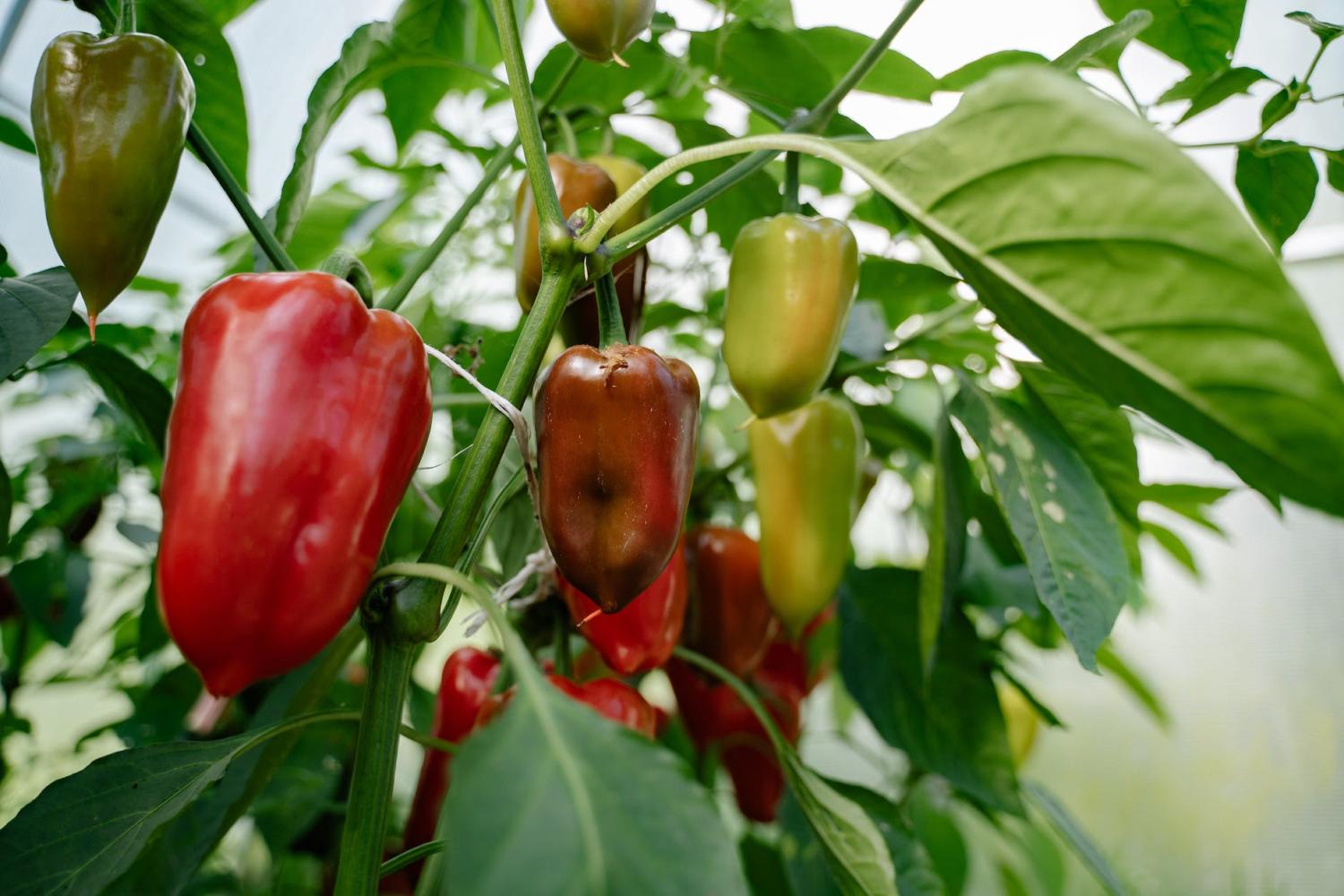Not many gardeners grow sweet peppers. I’ve always been surprised at this as they’re not especially difficult. This year the crop is better than ever, earlier, bigger and, or so it seems, tastier. Sweet peppers thrive in sun and warmth so this summer’s weather will have given the plants an extra boost. As the climate heats up peppers are likely to get easier to grow. If you’ve not tried them before it’s a crop well worth considering for next season.
Sweet peppers are tropical plants of the family Capsicum annum, which also includes chillies. Unlike chillies, sweet peppers contain no capsaicin, the component that makes peppers hot. Sweet peppers come in a variety of shapes and sizes. The best-known shape is the blocky ‘bell’ type but there are also those that grow long and pointed, sometimes called ‘ox horn’ peppers. When ripe, a sweet pepper can be red, yellow, orange, or even purple in colour depending on the variety. Very few varieties mature green: generally, a green sweet pepper has not had time to ripen. Although green peppers are perfectly edible, to my taste a coloured and ripe one is far more flavoursome, especially if eaten raw. When it comes to growing them, therefore, it’s warmth plus a long growing season that’s key.
In Yorkshire this means, despite hotter summers, growing in a greenhouse or polytunnel remains essential for a worthwhile crop. Sweet peppers planted outside, whether in soil or a pot and even in a sunny spot or against a wall, tend to struggle to produce fewer and smaller peppers that don’t fully ripen. And because peppers take time to ripen if you choose to raise your own plants, an early start is a must. Mid-March isn’t too soon to sow. Windowsill mollycoddling will do but a heated greenhouse is better. If either is impractical another option is to buy plants. It’s important not to purchase these too early – sweet peppers will sulk if put in an unheated greenhouse before the end of April.
Once it warms up, sweet peppers should romp away under cover. Plants can be grown either in soil or in good-sized pots and grow bags. Take care not to over-water, as wet conditions will stunt growth. A well-grown plant can get quite tall, 75cm isn’t unusual, so securing to a stake or strong cane is necessary to avoid broken branches or toppled plants. It’s often recommended that the central growing point is pinched out at about 30cm tall to encourage bushier, more fruitful, side growth. I’ve never done this and still get plenty of peppers. More important in my experience is to harvest some of the peppers green early in the season. This’ll induce a further flush of flowers and should result in a plant with peppers at two stages of growth – one batch that’ll ripen around August and a follow on batch that should ripen into autumn.
Much more advice on growing sweet peppers can be found online. A good UK-based source is ‘How To Grow Sweet Peppers’ at www.gardenfocused.co.uk/vegetable/pepper-sweet.php. As for varieties, I’d recommend F1 hybrids rather than traditional types as these tend to give more robust plants. Favourites include Red Star, a red-skinned bell type, and Diablo, an especially tasty, red-skinned ox horn.











Add a comment